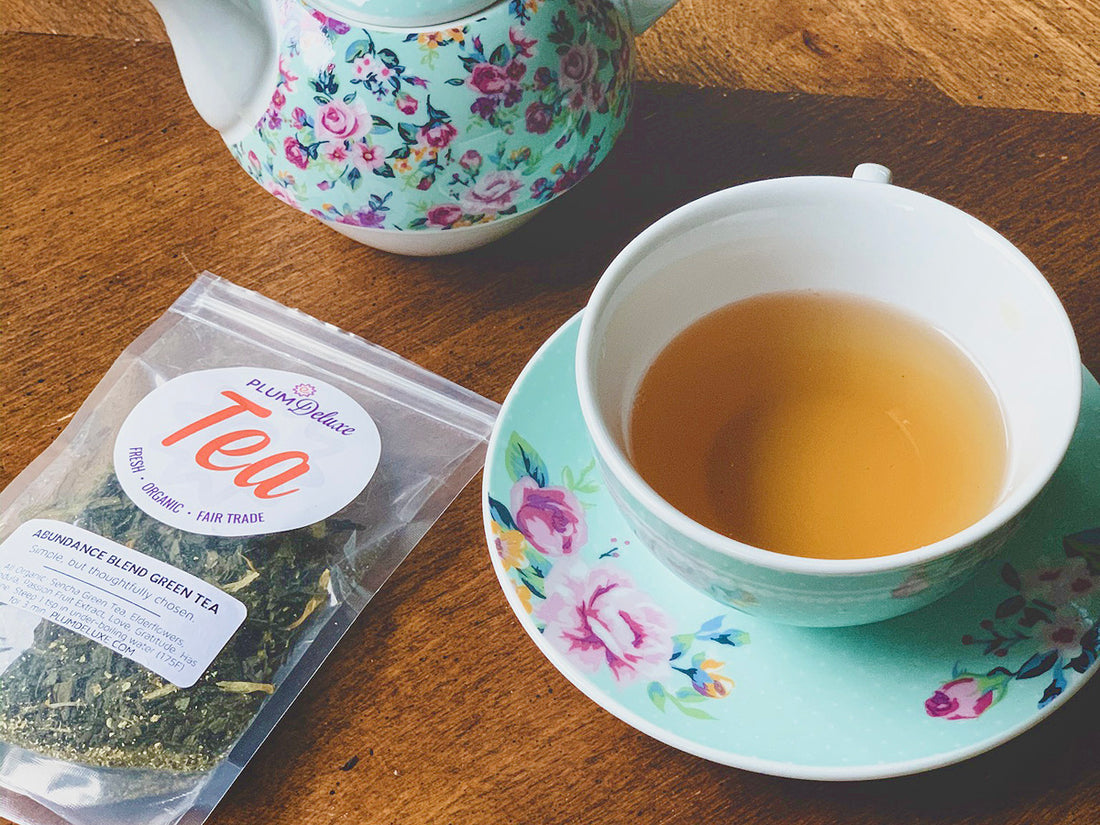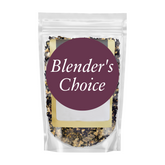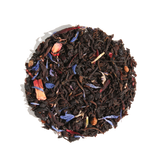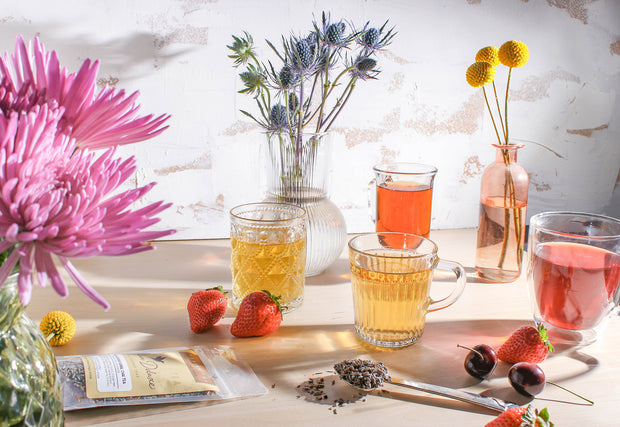
Many people first experience black tea as their entry point into tea drinking. It is available world-wide and popular particularly in Europe and North America. However, in other areas of the world you may be more likely to find other types of tea such as green and white teas championed. In China, green and white tea have been among the most popular blends for thousands of years.
Green tea in particular has been studied and is known to have a number of health benefits; it has been used in traditional Chinese and Indian medicine for years. It has only relatively recently been gaining popularity in the USA. White tea, while perhaps less well known, has similar benefits and taste profile to green tea. Both green and white teas are delicate and light to taste.
What Is the Difference Between White Tea and Green Tea?
All tea, besides herbal or fruit tea, comes from the plant Camellia sinensis. The production processes involved in drying the plant are how we end up with various tea blends. It is not the raw product that changes, but rather the methods used to dry the tea that change the blend we end up with.
Both white and green teas are more lightly processed than black tea. Green tea is often dried in the shade after cultivation, then lightly pan fried or steamed.
White tea, in contrast, is first dried in direct sun and then placed indoors for further withering. The indoor humidity, temperature, and tea fermentation must be closely monitored. White tea gets its name from the downy white hairs that remain on the leaves, which are picked from the plant when they are still small buds, a time intensive process. Retaining the downy hair is vital for white tea to keep its color. Green tea and other blends change in color as a result of the more intensive processing they undergo in comparison to white tea.

How to Brew Green Tea
Green tea is delicate and requires a little more consideration in brewing than the more hardy black tea. While these tips aren’t compulsory by any means, they will help you to get the best flavor when brewing your green tea.
Ensure your water isn’t boiling hot. If it is, you may find the water burns your leaves, changing the flavor and leaving you with a bitter tasting tea. If too cold, the flavor won’t be extracted properly into the water and the green tea will be weak. Water between 160 and 180 degrees is best. Some electric kettles now have a temperature function where you can select the temperature for your tea, which is super handy. Otherwise, when boiling your water, look out for when bubbles are forming at the base of the water but not at the top and you should be in the right range. Alternatively, bring your water to boil then remove it, allowing it to cool for five minutes before using it in your tea.
If you’re wondering how long to steep green tea, usually between two to three minutes is enough for a nice flavor. Less time and you might have a weak tea, much longer and your tea may begin to turn bitter. The Plum Deluxe tea blends come with a suggested brew time on the label, which is a great place to start if you’re unsure.
Adding a small slice of lemon or a few mint leaves can often draw out the flavors of green tea. If you like it sweet, you may like adding a small drop of honey as you drink your tea.

How To Brew White Tea
Like green tea, a cup of white tea can be easily ruined by improper preparation. Don’t let this scare you off! This tea is lovely and light, having an almost fruity flavor from the young leaves used in its preparation. With a few simple steps, even a newbie tea lover can master this brew.
As with green tea, water temperature is vital in ensuring your white tea does not become bitter. Around 160 to 180 degrees is best. With the leaves being so delicate, you don’t want to burn the them with water that is too hot.
If you’re wondering how long to steep white tea, it takes longer than green tea. Specific times will vary depending on what kind you’re using, so always be sure to check the packet. Generally, white teas withstand a longer steeping time than most other teas and you can steep for up to ten minutes. I suggest steeping for three minutes, then taste testing at minute to two-minute intervals until you find your desired flavor intensity. Once you’ve learned this, the next time you make a white tea it will be a breeze!
Some people suggest using filtered water for your green and white teas as it can improve the flavor. If you are consistently having issues with the flavor of your tea it may be worth looking into, but for the most part your tap water should result in a great cup of green or white tea.

Blend Suggestions
Here are a few of Plum Deluxe’s green and white tea blends to consider trying out. They’re all lovely and perfect for both tea beginners and more experienced tea lovers.
Green Tea
Abundance Blend is one of my personal favorites. Elderflowers and passionfruit notes pair wonderfully with the lightness of the green tea. Delicious!
Hope Blend, a sencha green tea with floral jasmine, is soft and inviting, while Garden Grove Green https://plumdeluxe.com/product/garden-grove-green-tea is bursting with vanilla notes and tart cherry for a complex and delicious blend.
White Tea
Afternoon “High Tea” uses a white tea base with fruity flavors of peach, pear, and apricot. Fruity and light, it goes lovely with an afternoon spread of scones with jam and cream.
Candlelight Blend has been paired with orange and champagne grape essence.
Tea Break is a relaxing blend with honeydew melon and tangerine flavors – perfect to unwind whether it’s for five minutes or a few hours.
There you have it, everything you need to know to get you started drinking green and white tea! Don’t be intimidated by the delicacy of these blends. Although they are a little trickier to master, the effort is well worth it.

![Spring Break Tea Variety Pack [6-Pack Variety of Flavors]](http://www.plumdeluxe.com/cdn/shop/files/spring-break-pack.jpg?v=1740682266&width=165)















